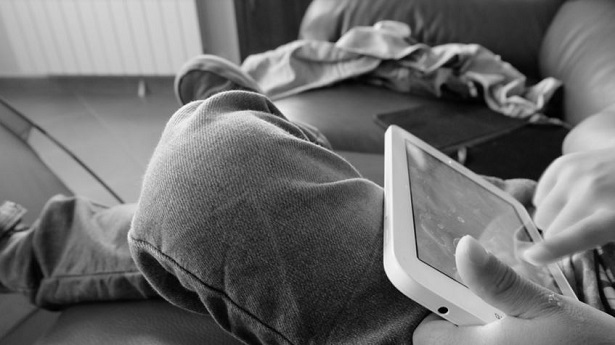
Correct posture, not only for looking good, in shape and alert, but also for avoiding suffering from pains and muscular imbalances that could have grave consequences, even irreversible, that affect the spinal column, our major support.
It may seem something that only affects other people, maybe those who are obviously hunchback or a walk and move in an uncoordinated way. Correct posture, however, must be a concern of everyone because everyone, or almost, due to tiredness or distraction, can adopt postures that become a habit. A terrible habit. At work, in the car, lying down in bed, often it is during these occasions that the correct posture must be kept under control.
Correct Standing Posture
When we are on our feet, standing, a position at high risk of causing chronic back problems, it is better to keep the knees slightly flexed and the chest open, such that the abdominals can expand and allow us to breathe better. It is also important to make sure that our weight is divided equally onto both legs.
If we start walking, it is important to make sure that the neck and head remain straight and avoid looking too far downwards to avoid neck pains. Regarding the act of walking, first this heel must touch the ground, then the tip, and not vice versa unless we happen to be dancing.
Correct Sitting Posture
No feet dangling from the seat or stool, when we sit we must always keep our feet supported on the ground, both of them. The back must remain straight and the shoulders relaxed, downwards, and never curved forwards. Often, people cross their legs, which is ill-advised if you want to have correct posture, because in this way you risk blocking blood circulation and possibly developing problems of swelling and fatigue.

Correct Computer Posture
In front of a computer, the same rules as for sitting are valid, keeping an eye also on the time because it’s a good idea to get up and stretch your legs and walk around a bit every hour, in order to avoid getting sleepy. You can take advantage of this hourly stretch to move your arms and twist your hips, flex your back and stretch your muscles.
Correct Sleeping Posture
When going to bed, it’s not always easy to remind yourself to assume a correct posture, and most importantly respect it, because during sleep we may change positions without realizing it. We should try anyway to adopt a correct posture. We should lie on our side with legs bent, better if lying on the left side, and maintain the vertebral column aligned. A good mattress and pillow help a lot, other than just for having good dreams.
Correct Posture in the Office
In the office it is very important not to sit for too long and to stretch your legs approximately every hour, and even have a little walk around your desk. Having correct posture is also important for appearing awake and alert and not bored or listless.

Correct Posture: Exercises
Posture exercises are simple but essential, and above all it is important to do them regularly. These exercises for correct posture can be carried out at home or anywhere, not only in the gym. Let’s try sitting on the floor, extending the legs and trying to lower the chest until we touch the tips of our feet with our hands. In this way we stretch the back, the shoulders, and the neck.
To benefit and “sculpt” the calves and abdominals, we can stand up and walk with a book on our head, as suggested in the old guidebooks. Head high and neck straight, without looking down and distributing the wait over both legs. A good exercise is that of trying to be aware of our posture in every moment because often it’s not true that we don’t know the correct posture, we simply aren’t aware of how we hold our bodies.
Correct Posture Advice
For those who want to get to work right away to improve their posture, there is a book that can guide you, on sale on Amazon for €30. “Postural Gymnastics: Exercise and Advice to Conquer Good Posture”.
If you liked this article, continue to follow me on Twitter, Facebook, Google+, Instagram
You may also be interested in:
- Postural Back Aches
- Body Language
Translated by Raymond Bellon